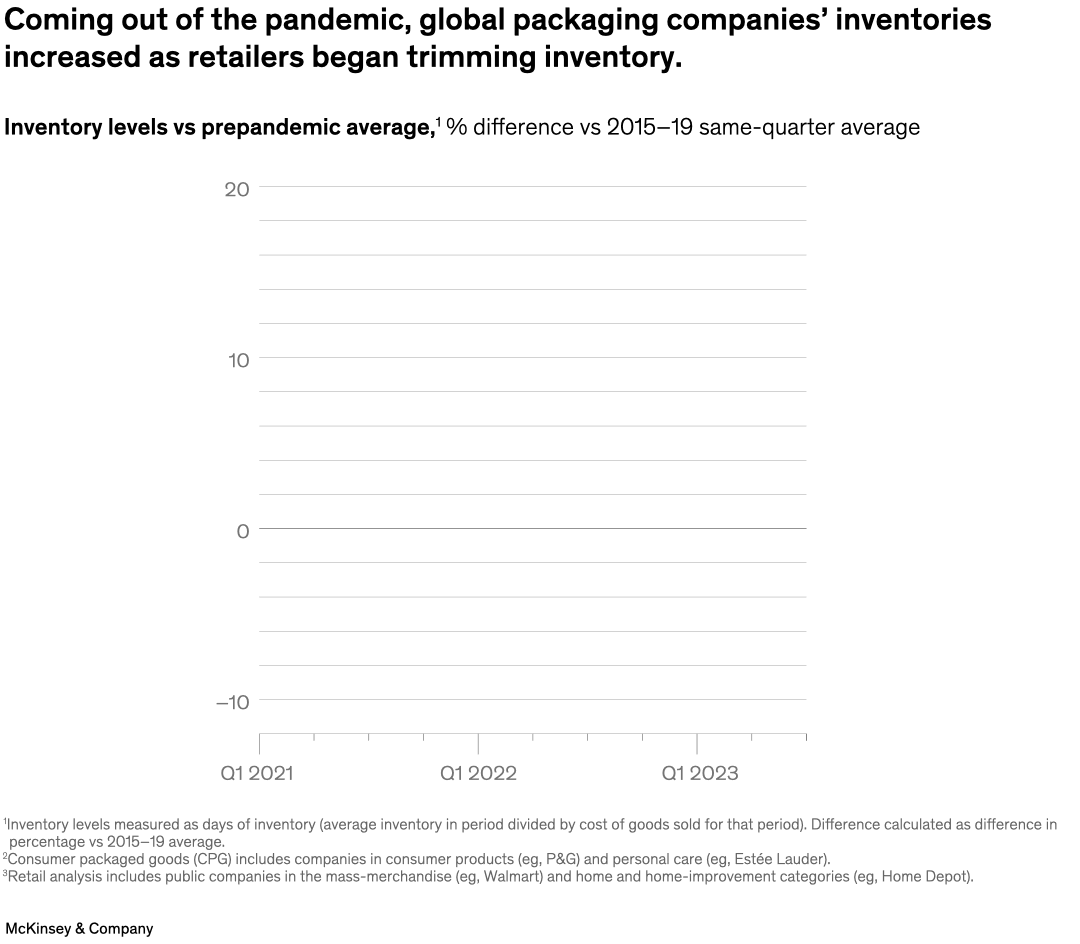After the COVID-19 pandemic disrupted supply chains globally and left companies with low inventory, retailers started building up their stock from 2021 to the first half of 2022. However, from the second half of 2022, businesses began slimming their inventory as supply chains improved and interest rates increased, partner Eren Cetinkaya and colleagues explain. Yet, while destocking continued at the retail level, the consumer-packaged-goods and plastic-and-paper packaging sectors are facing inventory levels 15 to 20 percent above pre-COVID-19 levels, which could indicate a headwind for demand this year.

Image description:
A line graph shows inventory levels as a percentage of the pre-COVID-19 pandemic average. Inventory for both paper-and-plastic-packaging and consumer packaged goods companies has climbed steadily since the end of the pandemic to ~17% over the average by Q3 2023, while retail companies have steadily destocked to a projected 4% of the average by Q3 2023.
Footnote 1: Inventory levels measured as days of inventory (average inventory in period divided by cost of goods sold for that period). Difference calculated as difference in percentage vs 2015–19 average.
Footnote 2: Consumer packaged goods (CPG) includes companies in consumer products (eg, P&G) and personal care (eg, Estée Lauder).
Footnote 3: Retail analysis includes public companies in the mass-merchandise (eg, Walmart) and home and home-improvement categories (eg, Home Depot).
End of image description.
To read the article, see “Petrochemicals review: Where we are now and where we’re going,” May 31, 2024.